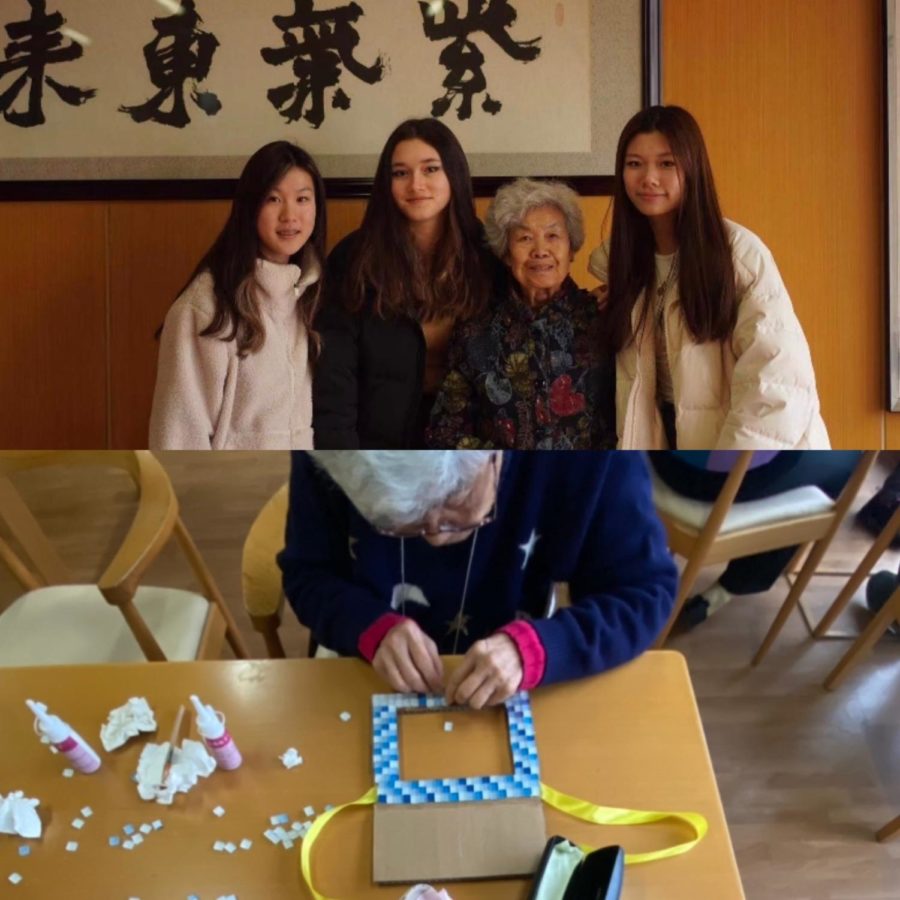A first glance at the 上海宜川养老院 (shang hai yi chuan yang lao yuan), Shanghai Yi Chuan senior home, reveals the specialties of this lovely place. Someone would run up to you and ask if you need water, a seat, and wonder who you are coming to visit. The soft scent of plants and other botanical creations fill your nose, and the beige color palette is visually appealing to the eye. Kindness is a trait that everyone possesses here, ensuring that not even a visitor goes unnoticed.
As are most Chinese families, Shanghai families have certain familial expectations that essentially portray senior citizen communities as the epitome of neglect and disrespect. This belief has fostered a general stigma over all senior homes. My recent visits to a Shanghai senior home challenged this perspective and instead, revealed the beneficial aspects of these loving communities.
A vast majority of Chinese culture cherishes family, with a saying that embodies the entire spirit of this tradition, 尊老爱幼 (zun lao ai you), which means to respect the elderly, and love the young. This saying promotes the idea that it is shameful to not live with your family, as you would be abandoning them, whether or not you have the resources to care for them. Taking care of grandparents serves as an expression of gratitude for the sacrifices they have made for their children.
My family lives ten minutes away from my grandmother’s apartment, and we frequently visit her. One of the main reasons we do not live together is that when we first came to Shanghai, my grandmother’s apartment was too small to house a family of four, so we looked for our own home. We do not follow the traditional living styles, but we do follow the 尊老爱幼 (zun lao ai you) ideals. My grandmother comes over for dinner every week, and we talk about life and how school is going.
Although family principles and beliefs are to be respected, their opinions are influenced by an incorrect stigma surrounding senior homes. The home I visited was well furnished and resembled a nice hotel. Everything is set up so that each senior citizen would receive maximum comfort and happiness in their lives. Some buildings’ significant elements include expansive balconies that overlook the lake and sky, the multiple elevators and stairwells for easy access and transportation, and the recreational rooms for designated activities. They even have a 麻将 (ma jiang) mahjong club with a particular room to compete.
The senior homes may be luxurious depending on location and funding, but the industry itself is grossly disregarded. Although senior citizen communities may slowly grow more popular, the workers that donate their time and efforts are still pushed through hours of arduous, uncredited work. The mistreatment the workers face is heartbreaking, as they feel it is their obligation to keep pushing themselves, even as they age, and fewer people apply for a job. There are many aspects to the stigma that have left this industry underdeveloped, and should be changed, granted that this may be difficult.
The first time, I visited with a group organized by Nancy Lin (‘23). We started orientation, where we got to tour the senior home, meet a lot of people, and begin to get to know them. Every person lights up around younger people, as they said that it is refreshing to speak to people so youthful and hear them share their lives. I was asked many questions about my parents, my school, and my Chinese speaking abilities.
“Before going to the elderly homes, I didn’t know many families that considered them a place for their senior family members.” said Cindy Nie (‘23), another member of the volunteer group. “However, when I visited, I found that these elders were extremely joyful; they have lots of activities such as arts and crafts, photography lessons, and even movie nights. It is almost as if they have a community of their own.”
One activity that they especially love is posing for photographs. Jasmine Wan (‘23) brought her camera, and once we asked them if they were open to taking pictures, the senior citizens began smiling, looking for good background ideas, and wondering if they should change their outfits. One woman, in particular, spent a few minutes deciding which sweater she should model before deciding on a festive red one with a beautiful scarf.
During the next visit, they were so pleased with the outcome of the photos that they wanted to create picture frames to display them in. The group of volunteering students from Shanghai walked up to the ninth floor and into the sizeable recreational room, where about a dozen senior citizens were waiting gleefully for our arrival. The craft was gluing mosaic tiles onto a cardboard frame, which was exhilarating for them.
“The seniors I worked with were very welcoming, and while doing arts and crafts with them, I was able to connect with some of them and learn more about them through conversation,” said Richard Wu (‘23), who recently joined the volunteer group. “I could tell that the community was great, as there was a lot of collaboration going on between the seniors. It was a great experience overall.”
A woman in a blue sweater was adamant in crafting a lovely patterned design and was concerned once a specific color had run out. Another woman in a purple jacket could not decide which colors to put down, so she asked me which colors I liked. They were so invested in this project that when it was time to dry the glue, they stared impatiently at the person blow-drying the frame, wanting to see their finished works of art.
The elderly community is very close, and the clean, lovely homes they live in are beneficial for them. They love it when younger people visit, spend time with them, and have more time to practice their hobbies.
It should be noted that my story should not be regarded as the only reality of a senior community, as every person has their different experiences; my narrative is simply a telling of the general population I observed and talked to. The stigma around senior homes should be eliminated, and overheard reviews should be replaced with true positive stories from the elderly community themselves.







![Many Webb students spend their free time in the library watching a popular TV show like Riverdale and Euphoria. “Based off what I’ve seen, like in Euphoria, because the actors are older, they don't showcase an actual high school life properly,” Sochika Ndibe (‘26) said. “Since [the actors] are older [and] playing a teenager, from a girl’s perspective, it is going to make you think you should look more developed at a young age.” The actor, who plays Veronica Lodge, was 22 years old at the time of filming.](https://webbcanyonchronicle.com/wp-content/uploads/2025/03/Antecol-Media-affects-how-society-functions-graphic-1200x900.png)

